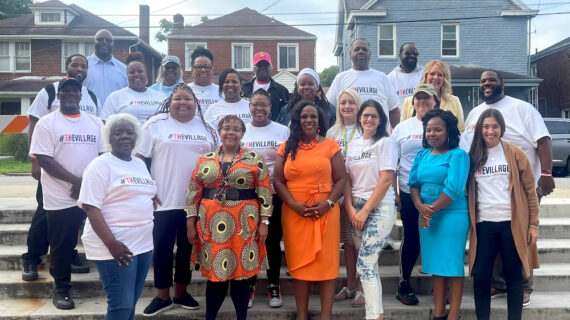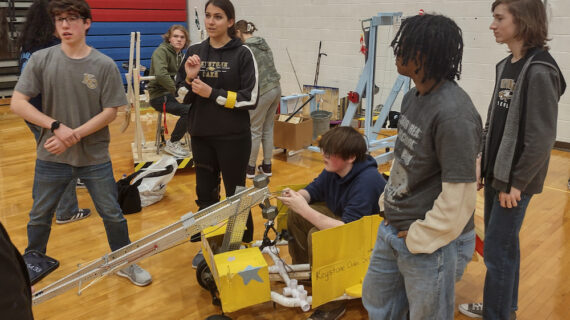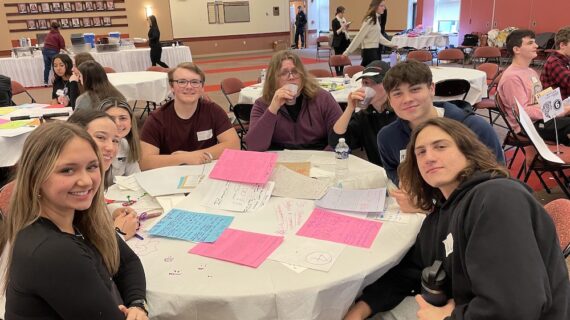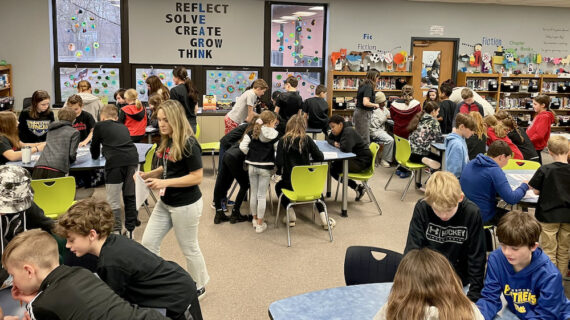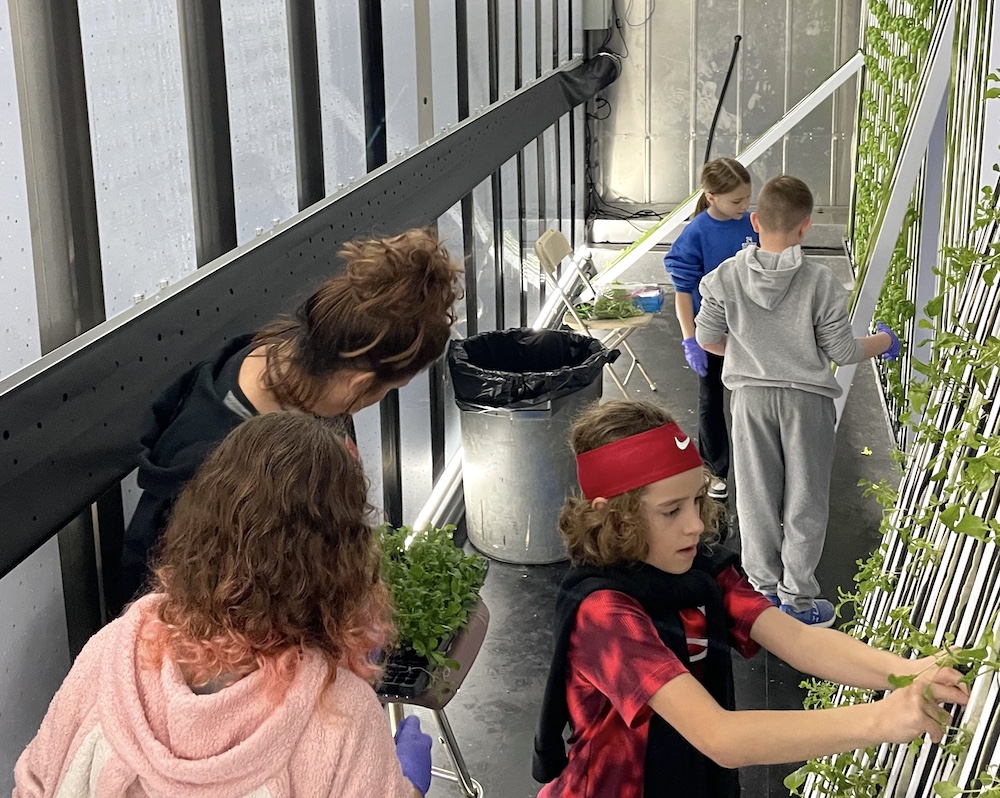
Inside a repurposed shipping container, Elizabeth Forward students are growing the future — and themselves
This story is one in a series created in collaboration with the AASA Learning 2025 Alliance to celebrate the work of groundbreaking school districts in the Pittsburgh region. Kidsburgh will share these stories throughout 2024.
Want learning to grow and flourish in your community? At Elizabeth Forward School District, they’ve found a wonderfully creative way to make that happen: Students are growing produce inside a shipping container repurposed into a vertical “freight farm.”
In the process, they’re learning math and science, agriculture and social studies — and how the world of food actually works.
Elizabeth Forward, in the southeasternmost corner of Allegheny County, has earned a reputation as an impressively tech-savvy district. But Superintendent Keith Konyk points to the freight farm as an example of something he doesn’t want forgotten: Technology is, in the end, a tool for people to connect and make progress.
“Variety is everything,” Konyk says. “We’re good with technology, but humans are the central part of the puzzle.”
Konyk’s district is part of the Western Pennsylvania Learning 2025 Alliance, a regional cohort of school districts working together — with support from The Grable Foundation — to create student-centered, equity-focused, future-driven schools. Led by local superintendents and AASA, The School Superintendents Association, the Alliance convenes to help districts like Elizabeth Forward innovate in ways that will create new possibilities for all students.
The freight farm is one of those creative possibilities.
It has been coming together bit by bit in recent months, and students are excited to explore questions like these: Does red light affect growing differently than blue light? What happens when we make minor adjustments to nutrients or pH in the water? Which plants grow better than others?
And, of course, the question that most pocket-money-hungry teenagers might also ask: How can we sell the produce we grow? Some of those studying entrepreneurship have already started brainstorming about what’s possible.
The students are helping others, as well: Freight farm produce is now available to Meals on Wheels and nearby food banks, giving families in need access to perishable, healthy foods instead of canned and boxed groceries. “That’s another avenue, I think, where we can immediately have an impact,” says high school principal Michael Routh.
Konyk sees the initiative branching out even further.
“We also have some very productive farms in our community. Could there be an opportunity for this to spark a farmer’s market?” Konyk says. “That’s our thinking in the future — an opportunity for kids to sell freight farm goods at a monthly market in the high-school parking lot in conjunction with local farmers.”
In short, the freight farm is a project that contains multitudes — one innovation that could spark many more.
GROWING KIDS, GROWING VEGETABLES
Here’s a sentence you may not hear often in a high school setting. “The arugula only needs two weeks in the cultivation area and then we can harvest.”
That comes from Nolan Larry, who teaches environmental science at Elizabeth Forward High School and runs the freight farm. Those unexpected words are packed with innovation and possibility.
At Elizabeth Forward, the seeds, if you will, are planted early. Students at Central Elementary began working with tower gardens last year, learning about hydroponics and growing vegetables without dirt. They grow mint, basil and different kinds of lettuce. And if you visit Central, don’t be surprised if someone hands you a bag of vegetables to take home.
“We try to share with our school community,” says Denise Kahler, the elementary gifted teacher for the district who manages the tower garden. “But then kids would come in and go, ‘Hey, can my mom use some parsley?’ So we harvest some and put it in a little bag and make sure we label it and then they send it home.”
Kids are learning new vocabulary words like “kale.” Some weren’t familiar with arugula until the school nurse started asking to add some to her lunch. Taste tests tend to unfold. Reviews happen. Parsley, Kahler notes, has not always been popular.
Nevertheless, the tower garden is a training ground for the years ahead, and elementary students are already eager for a field trip to visit the high school freight farm — and one day help run it.
This cross-pollination of teachers at the elementary and high school levels creates new alliances. “We’re really excited about the idea,” says Assistant Superintendent Mary Carole Perry.
And high schoolers seem just as excited.
“Kids are asking: What’s that thing out there?” Larry says. “They are really intrigued.”
The teenagers, he says, have been relishing the opportunity to break from the cerebral world of class work and get their hands dirty — metaphorically, since there’s very little dirt at play in this high-tech farming model.
Though the freight farm is mainly used by environmental science students, kids have begun dropping by during study halls and are glad to be welcomed — and appreciate the aroma of fresh basil. “Kids,” Larry says, love to “get their hands on stuff.”
It sounds like one corner of the wild frontier of innovation, and it is. That’s part of the fun. In this particular project, the kids are growing the plants, and the teachers and administrators are growing the kids.
“If you’re doing hopefully some innovative things for kids, there’s no roadmap for this stuff,” Konyk says. “You kind of have to figure it out as you go. But it’s worth it.”
Want to download this story? Click here for a PDF.
